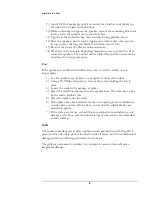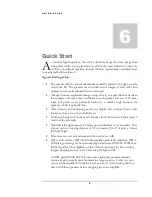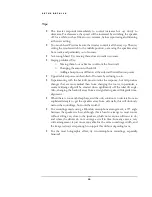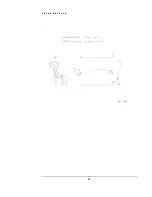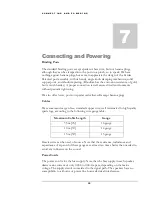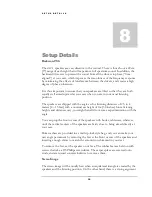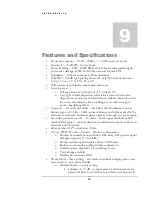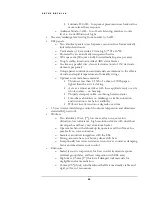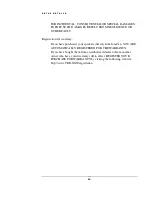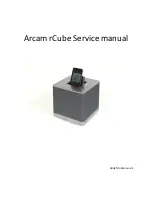
S E T U P D E T A I L S
19
9
Features and Specifications
•
Frequency response -- 30 Hz - 20 kHz +/- 3 dB on axis (in room)
•
Sensitivity -- 87 dB/1W/1m minimum
•
Power handling -- 40W - 400W RMS/ch/8 Ohm recommended; higher
power risks damage; 120W/ch/8 Ohm nominal for max SPL
•
Impedance -- 6 Ohms nominal, 4 Ohms minimum
•
Peak SPL -- 108 dB (pair playing music at 4 m [13'] in mid-sized room --
4.5 m x 7.3 m x 3.0 m (15' x 24' x 10')
•
Fully enclosed, not dipoles, makes placement easy
•
Listening area
o
Full spectrum 2 m wide @ 4 m (6.5' wide @ 13')
o
Very tight vertical dispersion and relatively narrow horizontal
dispersion conserves recorded ambience, reduces interaction with
the room, and sharpens the soundstage, yet is wide enough to
avoid a headphone effect
•
Crossover -- 1st order @ 500 Hz -- far below the disturbance-sensitive
hearing region of 1 kHz - 3 kHz; entire midrange and treble carried by the
electrostatic elements; minimum phase operation through crossover region
•
Secondary partial crossover -- 1st order -- limits upper treble from half
width of ESL panel -- controls dispersion and flattens response without an
electrical rolloff network
•
airLayer rolls off 2
nd
order below 2 kHz
•
2.5 way, WTW (Woofer - Tweeter - Woofer) configuration
o
Woofers mounted above and below ESL array; ESL panels employ
half-split-response (1.5 way ESL)
o
Woofer radiation pattern mates better to ESL array
o
Reduces room mode coupling and eases placement
o
Excellent phase alignment for soundstage focus
o
Vertical image stability
o
Minimal floor bounce effect
•
Woofer level -- three settings - autoformer maintains damping factor and
cone control -- no resistive divider
o
Intimate Mode -- on-axis seating
Intimate A: +3 dB -- compensates for when speakers are
placed far from front wall (or boosts bass near front wall)


